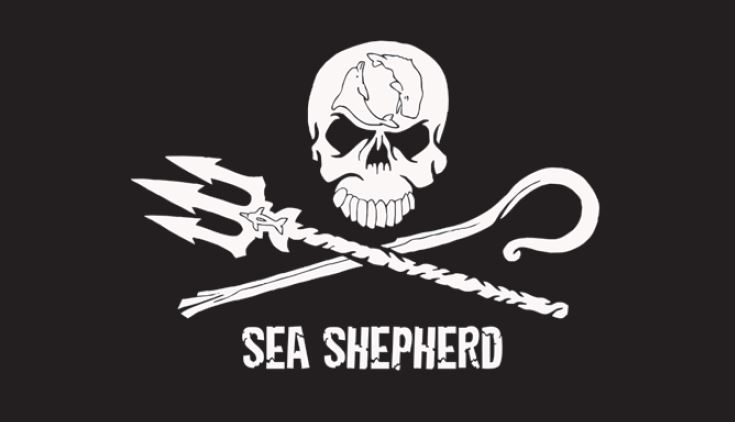INTERVIEW
Sustainability MAG: You're acting within the Sea Shepherd NGO... both at the helm of the ships and at the controls of drones?
Thomas Le Coz: Yes, I discovered Sea Shepherd in 2010, in Australia and since my first mission in 2012-2013, I have participated in thirteen Sea Shepherd campaigns, ten of them as captain. From Antarctica to Norway, through West Africa, the Mediterranean, Mexico and the North Sea. I trained as a drone pilot on our ships and, in general, I combine the two roles of captain and drone pilot. I love the excitement of flying a drone and being able to capture the image that I know will make a difference.
"The aerial perspectives drones provide allow us to see better what is happening on board fishing vessels and for example, to identify the presence of protected or illegally fished species"
In what situations do you use drones?
UAVs are becoming more and more powerful and offer increasingly more possibilities. During our campaigns, they are used in different situations. First of all, they are tools for our media team to realise external views of the ships and our actions. The shots obtained thanks to UAVs, which were previously only possible with helicopters, allow us to enrich the videos and photos that are used on our website and social networks. Moreover, UAVs are also strategic devices, the external point of view that they bring to a situation is very interesting and helps to understand better what is happening concretely. The aerial perspectives they provide also allow us to see better what is happening on board fishing vessels and, for example, to identify the presence of protected or illegally fished species. If we suspect that a vessel is fishing, we can use a drone to go and check, without having to approach the boat. They also allow us to identify a vessel, keeping enough distance so that the ship cannot identify us in return. Finally, the information we collect through UAVs will enable us to understand better the motives of operation of the illegal fishermen and, therefore, to be more effective.
However, we must not forget that taking off or landing UAVs on a boat represents major technical challenges! The UAVs available on the market are not always compatible and the semi-military models, which would be very useful to us, are very expensive.
Credit: Annie Hillina, Sea Shepherd
Operation Dolphin Bycatch 2 - 2019 / German trawler of 86 metres long. This boat has a pump that sucks up thousands of fish and sends them directly into the holds. It represents industrial fishing wich supplies supermarkets with cheap fish, surimi or flour for farm animals.
Where in the world does Sea Shepherd use these flying machines?
It can be nearby! Last year, in France, during Operation Dolphin Bycatch, several images taken with drones have been around the world to show what is happening in the Bay of Biscay. The first was of a dead dolphin lying on the deck of a French trawler. It was the perfect illustration of the problem of "incidental" dolphin catches. These images have been picked up in many media around the world. They helped to draw attention to France and put pressure on the government. During this campaign, we were also able to film the hauling of a giant trawler. There are no, or very few images of these factory ships, which are capable of hauling tons of fish with each haul. The aerial view gives a good idea of the size of the boat and the net and the amount of fish caught in it.
We also used drones during the campaign in Mexico to save the Vaquita. In that campaign, we used drones with thermal imaging cameras so that we could see what was going on at night because that is when most of the illegal activity takes place. When a target is spotted on the ship's radar, we can confirm, thanks to the drone, that this boat is indeed fishing, and even identify the species of fish it is hauling. These captured images have, of course, travelled around the world and have been used to expose the reality and seriousness of the situation in Mexico. Since then, fishermen have realised that drones were a threat to their lucrative activities, so they began to equip themselves with guns to shoot them down. Several of our drones were shot down in flight, and for every loss, $16,000 falls into the water. During this campaign in Mexico in 2016-2017, over a period of 4-5 months, no less than 593 boats were flown over, which represents 63 hours of flight time and 1,243 km!
Founded in 1977 by Captain Paul Watson, Sea Shepherd is a totally independent NGO fighting for the defense of the oceans. With the aim of defending and protecting the oceans and marine life, its three main missions are an active and non-violent intervention in cases of illegal attacks on marine ecosystems, denunciation and awareness-raising.
Founded in 1977 by Captain Paul Watson, Sea Shepherd is a totally independent NGO fighting for the defense of the oceans. With the aim of defending and protecting the oceans and marine life, its three main missions are an active and non-violent intervention in cases of illegal attacks on marine ecosystems, denunciation and awareness-raising.
To be read also in the dossier "Drones":
-Article published on November 23, 2020-




